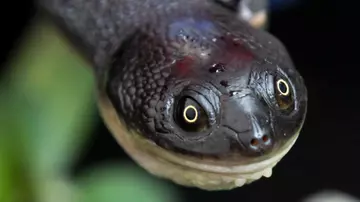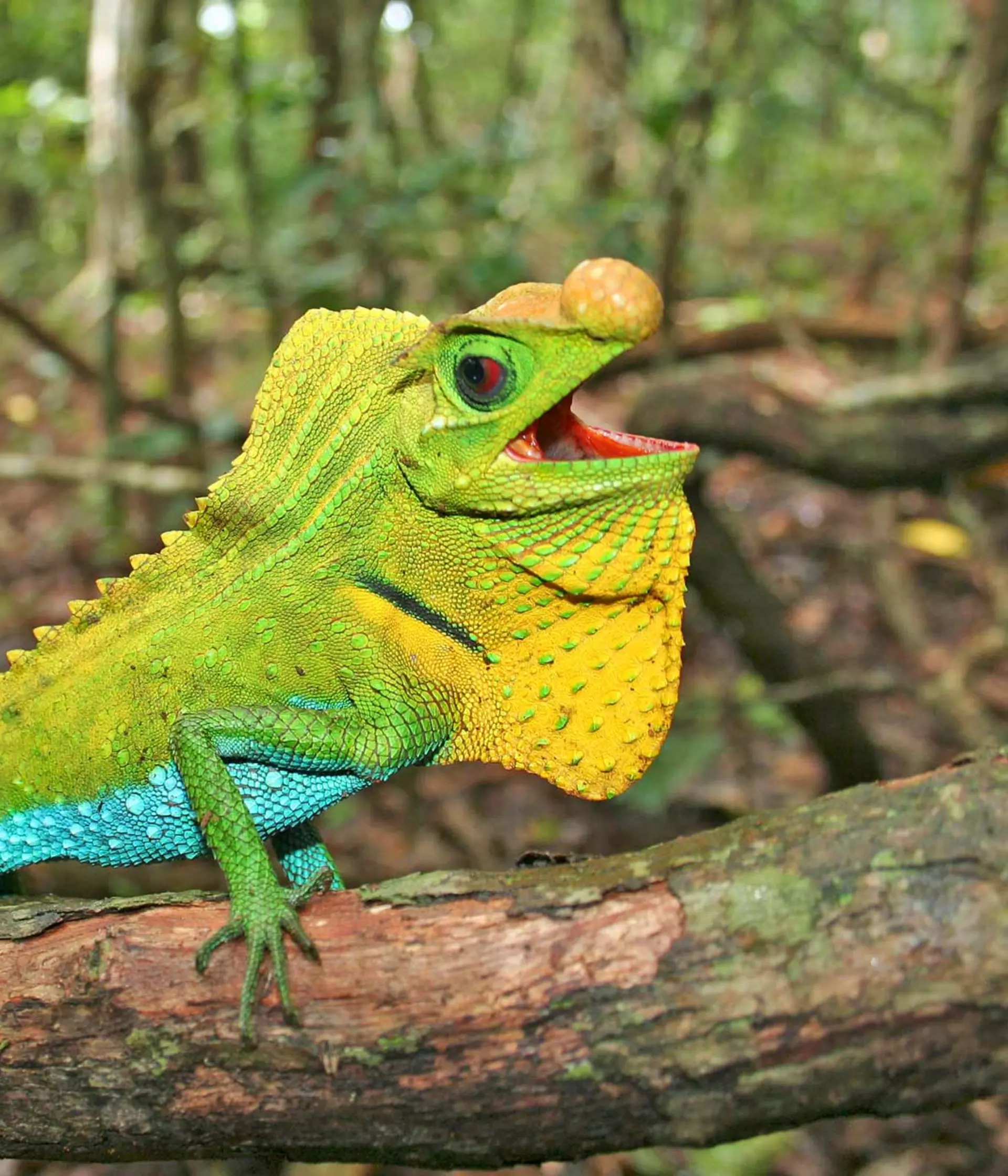
Mike Hoffmann
Head of Wildlife Recovery
Are reptiles at risk of extinction?
A blog by ZSL’s Head of Wildlife Recovery, Mike Hoffmann, and Freshwater co-ordinator at Indianapolis Zoo and past ZSL researcher, Monika Böhm.
Conservation is a discipline fraught with uncertainty. We seem to spend much of our time making difficult decisions about what to protect first, and where, in the absence of perfect, or sometimes even good, information. The IUCN Red List of Threatened Species is one of the most trusted information sources conservationists turn to first. For more than 50 years, it has been the oracle for the latest on the status of the world’s species. But even the best isn’t always perfect. The Red List covers less than 5% of described species, with significant gaps in coverage for many diverse groups like fungi and invertebrates, and sometimes information can go many years before being updated.

What if we don’t know enough about a reptile species?
Gaps and shortfalls in knowledge such as this leave conservationists in a position of hedging their bets – specifically, having to rely on information that does exist to inform their decisions on everything from policy to management. The hedge is that groups for which we do have sufficient information, especially the better-known mammals and birds, will serve as adequate “surrogates” for other, less well-known, species. There is some confidence associated with such hedging; for example, studies have shown that important sites identified for birds actually do a pretty good job of capturing other taxa.
But what happens when this isn’t the case? Reptiles are an interesting case in point. Reptiles are a remarkably diverse group of species, with more than 10,000 different species ranging from lizards and snakes to crocodiles and turtles in terrestrial, freshwater and even marine habitats. Unlike their other terrestrial vertebrate (“tetrapod”) relatives, reptiles are especially diverse in arid regions and on many oceanic islands and archipelagos. For this reason, reptiles have often been thought to not be well represented in current conservation strategies, and hence investing additional resources in achieving their conservation may be needed.
The case for Zoo's - a scientists perspective
Reptiles make the IUCN list
Encouragingly, the results of our new study, just published open access in the journal Nature, suggest this may not be necessary. The study is the culmination of a herculean, decade-plus effort to assess the state of the world’s reptiles, involving nearly 1,000 individual assessors. While the closest living relatives of reptiles, birds, have been completely assessed for the Red List no less than seven times, reptiles are now making their first appearance. Prior to this, the only status information available was for a sampled group of species (research led by ZSL back in 2013), for some specific taxonomic groups, like sea-snakes, and for some geographic regions (like Madagascar). For the first time, we now have a complete picture of the status of all reptiles, and of extinction risk across all tetrapods.

At least 21% of reptiles at risk of extinction
We found that at least 1,829 of 10,196 reptile species (21%) are threatened, compared with 41% of amphibians, 25% of mammals, and 14% of birds. For reptiles, this represents a staggering 15.6 billion years of unique phylogenetic diversity at risk. Reptiles are threatened by the same major factors that threaten other tetrapods—agriculture, logging, urban development, and invasive species—although climate change looms large.
Interestingly, and contrary to many initial predictions, reptiles inhabiting forested regions, where these threats are strongest, are far more threatened than those in arid habitats. This brings us back to our earlier dilemma: whether the previous lack of reptile data to include in conservation planning has left them at a disadvantage compared with other, better-known species. The answer is probably not. When taken together, existing information for threatened birds, mammals, and amphibians (the tetrapod groups for which comprehensive Red List data was previously available) proves to be pretty good for capturing the conservation needs of threatened reptile diversity. This almost certainly owes to the fact that reptiles are most threatened in those regions where other species are most threatened too.
On the face of it, this is good news. But there’s some tempering needed. First, many reptiles have very restricted distributions and do not overlap with the ranges of any other threatened tetrapod, leaving a small group of species with very small ranges in a highly perilous position. Second, some species will always require very targeted or tailored conservation interventions to help abate threats, such as introduced or invasive predators or wildlife trade.

Countries currently stand poised to agree a new ambitious plan for nature later this year at the 15th Conference of Parties to the Convention of Biological Diversity (COP15) that will guide decision-making over the coming decade. This plan includes explicit targets for safeguarding important sites for species coupled with more species- targeted responses designed to prevent further declines and help wildlife recover. The Global Reptile Assessment arrives in time to ensure that this particularly unique class of vertebrates is included in plans and policies.
From ZSL’s side, we continue to engage directly in conservation and research of these fascinating animals, including work with fantastic in-country partners on species like Gharial Gavialis gangeticus and Asian Big-headed Turtle Platysternon megacephalum, and vitally important work on understanding the risks posed by Snake Fungal Disease in Europe. And, of course, our long-running EDGE of Existence programme continues to work with some of the most promising, up-and-coming conservationists to deliver vital interventions for the world’s most unique and evolutionary distinct reptiles. In addition, our sampled Red List assessment for reptiles, a diagnostic tool to take the pulse of reptile status over time, is due an update later this year. These efforts will and must continue, but it’s also good to know that the many, diverse ongoing conservation efforts for other species likely have had some collateral benefits for reptiles!
